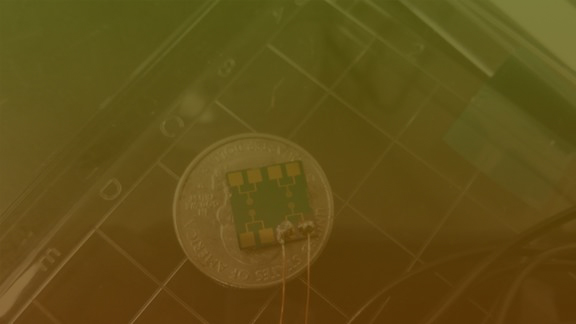The robots with ultra-sensitive skin

The University of Texas at Arlington has patented a smart skin, created by a UTA researcher, that will give robots more sensitive tactile feeling than humans.
“The idea is to have robots work better alongside people,” said Zeynep Çelik-Butler, a UTA electrical engineering professor. “The smart skin is actually made up of millions of flexible nanowire sensors that take in so much more information than people’s skin. As the sensors brush against a surface, the robot collects all the information those sensors send back.”
Çelik-Butler said the sensors, which are flexible and made of zinc oxide nanorods, are self-powered and do not need any external voltage for operation. Each is about 0.2 microns in diameter, while a human hair is about 40 to 50 microns.
In addition, the developed sensors were fully packaged in a chemical and moisture resistant polyimide that greatly enhances usability in harsh environments. The result is a thin, flexible, self-powered tactile sensing layer, suitable as a robotic or prosthetic skin.
Smart skin technology
The smart skin technology allows the robots to sense temperature changes and surface variations, which would allow a person alongside the robot to be safer or react accordingly.
Other possible future applications include adhering the smart skin to prosthetics to equip them with some feeling, applying the technology to other medical devices, weaving the skin into the uniform of a combat soldier so that any toxic chemicals could be detected or fingerprint identification.
“These sensors are highly sensitive and if they were brushed over a partial fingerprint, the technology could help identify who that person is,” Çelik-Butler said. “Imagine people being able to ascertain a person’s identity with this hairy robot, as my students call it.”
Teri Schultz, director of technology management in the UTA Office of Research, said the technology shows promise in a number of commercial sectors.
“Robots are the here and now,” Schultz said. “We could see this technology develop with the next generation of robots to allow them to be more productive in helping people.”
She added that the patent fits in well with the health and the human condition theme of UTA’s Strategic Plan 2020: Bold Solutions | Global Impact.
The research yielded an academic paper in a 2015 issue of IEEE Sensors Journal. Funding for the smart skin technology has come from the National Science Foundation and NASA.
Others contributing to the research include: Donald Butler, retired UTA electrical engineering professor; and Bhargav Nabar, a UTA electrical engineering graduate.





